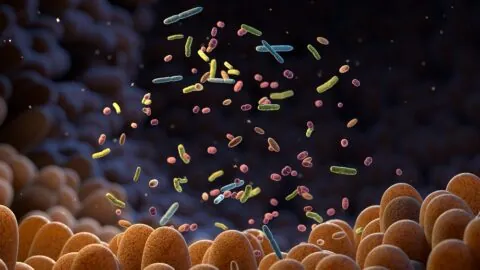About Anna Drangowska-Way, Ph.D. Anna graduated from the University of Virginia, where she studied genetics in a tiny worm called C. elegans. During graduate school, she became interested in science communication and joined the Genetics Society of America’s Early Career Scientist Leadership Program, where she was a member of the Communication and Outreach Subcommittee.
After graduation, she worked as a freelance science writer and communications specialist mainly with non-profit organizations.
Related Organizations
Articles from this author
July 02, 2025
The researchers of a recent study published in Aging Cell described their novel CD38 peptide vaccine, which improved many measurements of physical health and prevented cognitive decline in aged mice [1]. A long-term anti-aging vaccine Many anti-aging strategies, such as supplementation, require regular, daily intake. A vaccine, on the other hand, is a therapeutic approach...
June 24, 2025
A recent study investigated the effect of a single treatment of prostaglandin E2 on improving muscle strength and rejuvenating muscle stem cells in mice. The researchers explored the molecular and epigenetic aspects underlying this rejuvenation [1]. Aging muscle stem cells Sarcopenia, a loss of skeletal muscle mass and strength, is an age-related disorder that leads...
June 18, 2025
Analysis of over a thousand postmenopausal women suggests that women with longer reproductive spans, earlier first period (menarche), and later menopause experience slower brain aging [1]. Linking sex hormones to brain health The female reproductive system fails to work properly much earlier than other systems in the human body. The aging of the reproductive system...
June 11, 2025
In a recent study that included data from humans, mice, and cell culture experiments, researchers demonstrated that gut microbes and their metabolites can profoundly influence the senescence of endothelial cells. They also explored the molecular processes underlying these changes [1]. Senescence in the blood vessels Endothelial cells line the inner surfaces of blood vessels, and...
June 04, 2025
A recent analysis of over 20,000 middle-aged and older adults showed an association between a later chronotype (‘night owls’) and cognitive decline among highly educated people [1]. Early birds and night owls One risk factor linked to dementia is a disrupted circadian rhythm, the natural 24-hour cycle of sleep and activity patterns. Common disruptions in...
May 28, 2025
A recent study investigated differences in maximum lifespan potential among different mammalian species. The researchers found associations between gene family size expansion, maximum lifespan potential, and relative brain size. They also studied genomic features linked to lifespan evolution [1]. Maximum lifespan potential Maximum lifespan potential can be defined as "the age at death (longevity) of...









